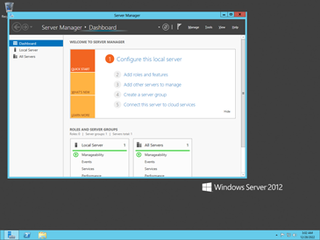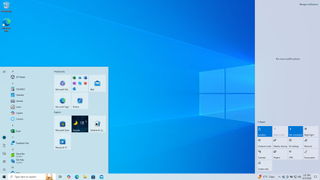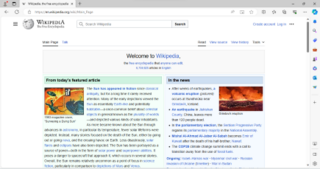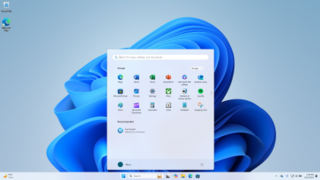
Windows 2000 is a major release of the Windows NT operating system developed by Microsoft and designed for businesses as the direct successor to Windows NT 4.0. It was released to manufacturing on December 15, 1999, officially released to retail on February 17, 2000, and released on September 26, 2000, for Windows 2000 Datacenter Server. It was Microsoft's business operating system until the introduction of Windows XP Professional in 2001.
Windows Server is a group of server operating systems (OS) that has been developed by Microsoft since 1993. The first OS that was released for this platform is Windows NT 3.1 Advanced Server, an edition of Windows NT 3.1. With the release of Windows Server 2003, Microsoft started releasing new versions under the name Windows Server. The latest release of Windows Server is Windows Server 2022, which was released in 2021.

Windows Server 2008 R2, codenamed "Windows Server 7", is the eighth version of the Windows Server operating system produced by Microsoft and released as part of the Windows NT family of operating systems. It was released to manufacturing on July 22, 2009, and became generally available on October 22, 2009, shortly after the completion of Windows 7. It is the successor to Windows Server 2008, which is derived from the Windows Vista codebase, released the previous year, and was succeeded by the Windows 8-based Windows Server 2012.

Microsoft started development on the .NET Framework in the late 1990s originally under the name of Next Generation Windows Services (NGWS). By late 2001 the first beta versions of .NET Framework 1.0 were released. The first version of .NET Framework was released on 13 February 2002, bringing managed code to Windows NT 4.0, 98, 2000, ME and XP.
Resilient File System (ReFS), codenamed "Protogon", is a Microsoft proprietary file system introduced with Windows Server 2012 with the intent of becoming the "next generation" file system after NTFS.

Windows Server 2012, codenamed "Windows Server 8", is the ninth version of the Windows Server operating system by Microsoft, as part of the Windows NT family of operating systems. It is the server version of Windows based on Windows 8 and succeeds Windows Server 2008 R2, which is derived from the Windows 7 codebase, released nearly three years earlier. Two pre-release versions, a developer preview and a beta version, were released during development. The software was officially launched on September 4, 2012, which was the month before the release of Windows 8. It was succeeded by Windows Server 2012 R2 in 2013. Mainstream support for Windows Server 2012 ended on October 9, 2018, and extended support ended on October 10, 2023. Windows Server 2012 is eligible for the paid Extended Security Updates (ESU) program, which offers continued security updates until October 13, 2026.

Internet Explorer 11 (IE11) is the eleventh and final version of the Internet Explorer web browser. It was initially included in the release of Windows 8.1, Windows RT 8.1 and Windows Server 2012 R2 on October 17, 2013, and was later released for Windows 7 and Windows Server 2008 R2 on November 7, 2013. It is the successor to Internet Explorer 10, released the previous year, and was the original, default browser in Windows 8.1 and Windows Server 2012 R2, before Microsoft Edge was introduced. Internet Explorer 11 was also included in the release of Windows 10 on July 29, 2015, as well as in Windows Server 2016 and Windows Server 2019. On April 16, 2019, Internet Explorer 11 was made available to Windows Server 2012 and Windows Embedded 8 Standard, the only still supported edition of Windows 8 as the final expansion of Internet Explorer 11 availability. Internet Explorer 11, like its predecessor, is not available for Windows Vista, Windows Server 2008 and earlier versions of Windows and Windows Server.
Docker is a set of platform as a service (PaaS) products that use OS-level virtualization to deliver software in packages called containers. The service has both free and premium tiers. The software that hosts the containers is called Docker Engine. It was first released in 2013 and is developed by Docker, Inc.

Windows 10 is a major release of Microsoft's Windows NT operating system. It is the direct successor to Windows 8.1, which was released nearly two years earlier. It was released to manufacturing on July 15, 2015, and later to retail on July 29, 2015. Windows 10 was made available for download via MSDN and TechNet, as a free upgrade for retail copies of Windows 8 and Windows 8.1 users via the Microsoft Store, and to Windows 7 users via Windows Update. Windows 10 receives new builds on an ongoing basis, which are available at no additional cost to users, in addition to additional test builds of Windows 10, which are available to Windows Insiders. Devices in enterprise environments can receive these updates at a slower pace, or use long-term support milestones that only receive critical updates, such as security patches, over their ten-year lifespan of extended support. In June 2021, Microsoft announced that support for Windows 10 editions which are not in the Long-Term Servicing Channel (LTSC) will end on October 14, 2025.

Microsoft Edge is a proprietary cross-platform web browser created by Microsoft. Released in 2015 as part of Windows 10 and Xbox One, it was initially built with Microsoft's own proprietary browser engine, EdgeHTML, and their Chakra JavaScript engine. Later on, it was ported to Android and iOS as a fork of Google's Chromium open-source project. In late 2018, Microsoft announced it would completely rebuild Edge as a Chromium-based browser with Blink and V8 engines, which allowed the browser to be ported to macOS. The new Edge was publicly released in January 2020, and on Xbox platforms in 2021. Microsoft has since terminated security support for the original browser. Edge is also available on older Windows versions, as well as Linux.
Windows Insider is an open software testing program by Microsoft that allows users globally who own a valid license of Windows 11, Windows 10, or Windows Server to register for pre-release builds of the operating system previously only accessible to software developers.

Windows Server 2016 is the eleventh release of the Windows Server operating system developed by Microsoft as part of the Windows NT family of operating systems. It was developed alongside Windows 10 and is the successor to the Windows 8.1-based Windows Server 2012 R2. The first early preview version became available on October 1, 2014 together with the first technical preview of System Center. Windows Server 2016 was released on September 26, 2016 at Microsoft's Ignite conference and broadly released for retail sale on October 12, 2016. It was succeeded by Windows Server 2019 and the Windows Server Semi-Annual Channel.
Windows 10 introduced a number of new elements, including the option to use a touch-optimized interface or a traditional desktop interface similar to that of Windows 7 along with live tiles from Windows 8. However, unlike previous versions of Windows, where most, if not all, major features for that release were completed by its RTM, Windows 10 continues to receive major features and changes beyond its initial release to market. Microsoft describes Windows 10 as an "operating system as a service" that will receive ongoing updates to its features and functionality. This is supplemented with the ability for enterprise environments to receive non-critical updates at a slower pace, and to use long-term support milestones that will only receive critical updates, such as security patches, over their ten-year lifespan of support.
Windows 10 is a major release of the Windows NT operating system developed by Microsoft. Microsoft described Windows 10 as an "operating system as a service" that would receive ongoing updates to its features and functionality, augmented with the ability for enterprise environments to receive non-critical updates at a slower pace or use long-term support milestones that will only receive critical updates, such as security patches, over their five-year lifespan of mainstream support. It was released in July 2015.

Windows Subsystem for Linux (WSL) is a feature of Windows that allows developers to run a Linux environment without the need for a separate virtual machine or dual booting. There are two versions of WSL: WSL 1 and WSL 2. WSL 1 was first released on August 2, 2016, and acts as a compatibility layer for running Linux binary executables by implementing Linux system calls on the Windows kernel. It is available on Windows 10, Windows 10 LTSB/LTSC, Windows 11, Windows Server 2016, Windows Server 2019 and Windows Server 2022.
Windows 10 Mobile is a discontinued mobile operating system developed by Microsoft. It was released to manufacturing on November 20, 2015, and was made generally available on March 17, 2016. In October 2017, Microsoft announced that it would pause the active development of Windows 10 Mobile, and future development will be limited to maintenance releases and security patches. The last feature update is the Fall Creators Update. The last version of Windows 10 Mobile reached the end of life on January 14, 2020. Development for Windows 10 Mobile has completely ceased since then.
Windows 10 October 2018 Update is the sixth major update to Windows 10 and the fifth in a series of updates under the Redstone codenames. It carries the build number 10.0.17763.

Windows Server 2022 is the thirteenth and current major long term servicing channel (LTSC) release of the Windows Server operating system by Microsoft Corporation, as part of the Windows NT family of operating systems. It was announced at Microsoft's Ignite event from March 2–4, 2021. It was released on August 18, 2021, almost 3 years after Windows Server 2019, and a few months before the Windows 11 operating system.

Windows 11 is the latest major release of Microsoft's Windows NT operating system, released on October 5, 2021. It succeeded Windows 10 (2015) and is available for free for any Windows 10 devices that meet the new Windows 11 system requirements.
Windows 11 is a major release of the Windows NT developed by Microsoft that was released in October 2021. Starting with Windows 10, Microsoft described Windows as an "operating system as a service" that would receive ongoing updates to its features and functionality, augmented with the ability for enterprise environments to receive non-critical updates at a slower pace or use long-term support milestones that will only receive critical updates, such as security patches, over their five-year lifespan of mainstream support.











